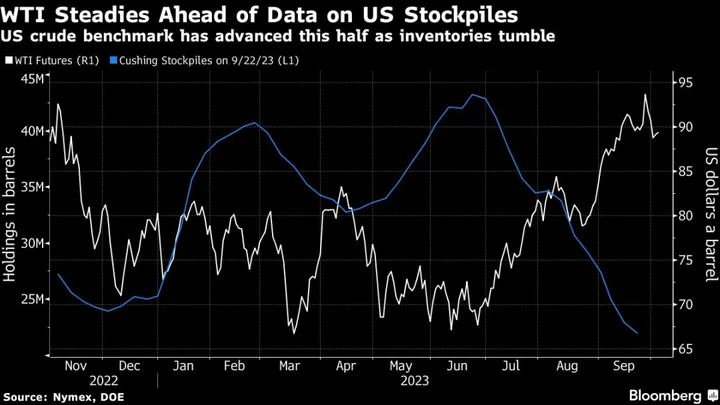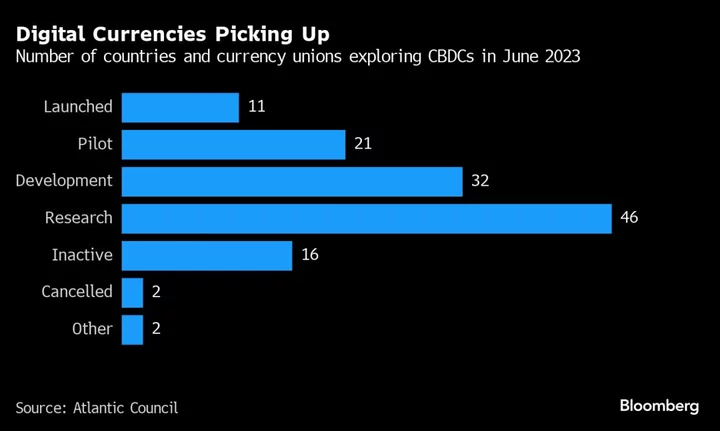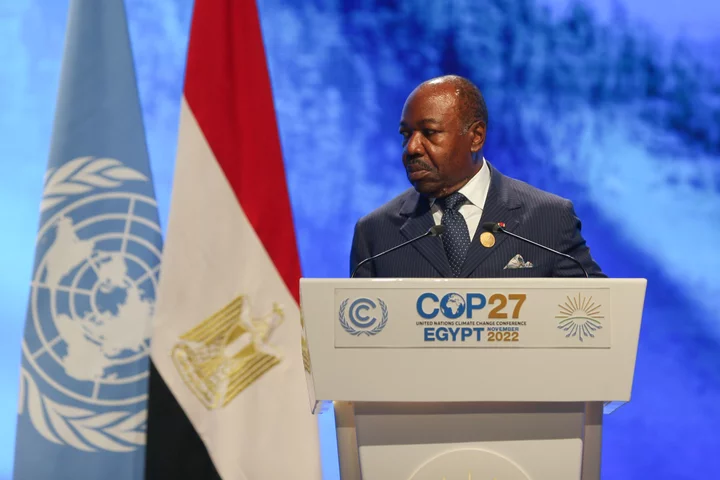Oil edged lower ahead of an OPEC+ review of the global crude market and a weekly update of US stockpiles, with investors turning away from risk assets including commodities and equities as the dollar extended gains.
West Texas Intermediate fell below $89 a barrel, after the US benchmark swung by more than $2.50 a barrel on Tuesday before ending modestly higher. The alliance’s Joint Ministerial Monitoring Committee convenes online later Wednesday, but delegates don’t expect the body to recommend any change in policy as Saudi Arabia and Russia lead output curbs.
In the US, meanwhile, the government will release figures on crude inventories against a backdrop of fast-declining holdings, including at the storage hub at Cushing. Estimates from the industry-funded American Petroleum Institute released Tuesday showed a modest increase at the Oklahoma site last week, but a draw on a nationwide basis, according to people familiar with the figures.
Oil has rallied since mid-June as the OPEC+ supply cuts tightened the market, with inventories sinking and key timespreads indicating greater competition for prompt barrels. Still, the upsurge has run into resistance in recent sessions as investors fret the Federal Reserve may not be done with raising interest rates, with a surge in the dollar making commodities more expensive for most buyers. Major gains in US Treasury yields have also hurt raw materials.
Crude prices have dipped recently as prospects for tighter monetary policy raised concerns about demand, ANZ Group Holdings Ltd. analyst Adelaide Timbrell said in a note. For OPEC+, that reversal “could be a reason for the cartel to keep their supply cuts unchanged in today’s review,” she said.
A potential tweak to Russia’s ban on diesel shipments was also in focus. Moscow is discussing changes to the curb on overseas supplies that would allow exports only from companies that produce the fuel, but keep the restriction in place for non-producers, according to people with knowledge of the matter.
Widely watched market metrics continue to highlight tight conditions, although they’ve softened in recent sessions. WTI’s prompt spread — the difference between its two nearest contracts — was $1.77 a barrel in backwardation, a bullish pattern. That compares with less than 70 cents at the end of August, and more than $2 at some points last week.
To get Bloomberg’s Energy Daily newsletter into your inbox, click here.









